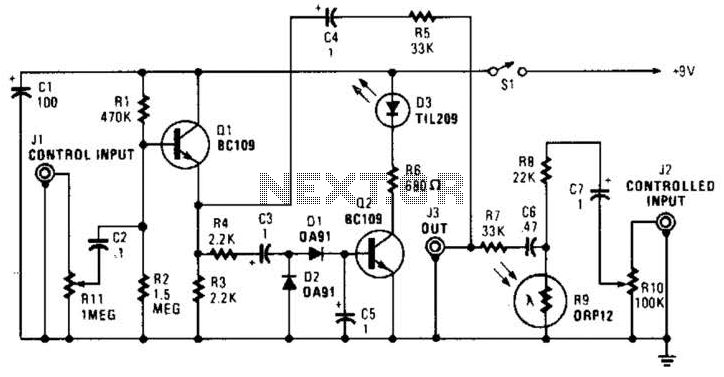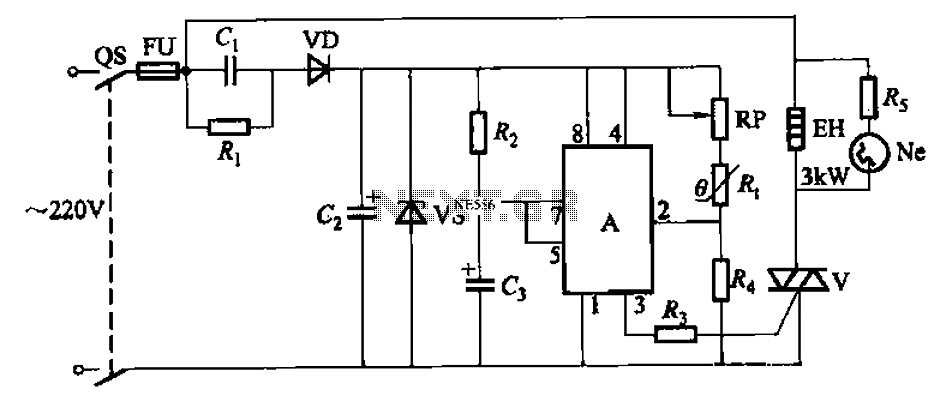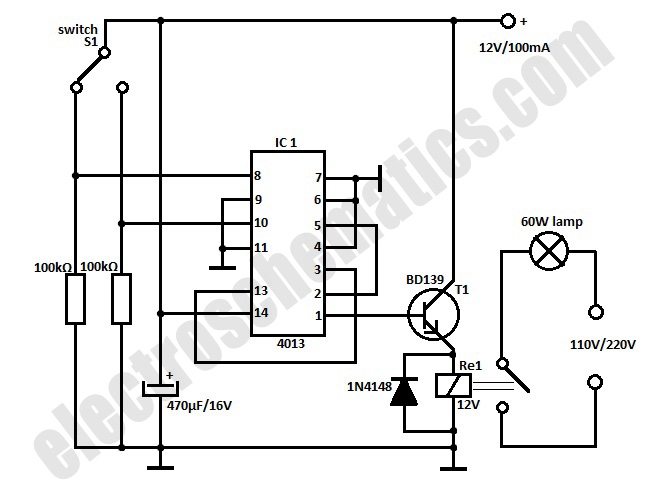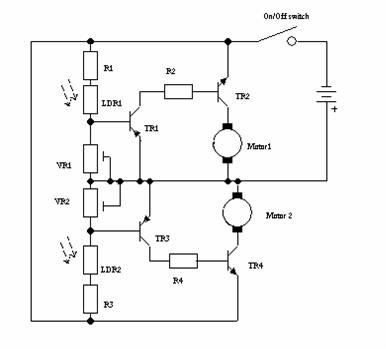
Automatic Lawn Light with LDR

The circuit of a compact and true solid-state automatic lawn light is described here. The circuit can be used to switch on incandescent garden light bulbs.
The described circuit functions as an automatic control system for garden lighting, specifically designed for incandescent bulbs. It utilizes solid-state components to ensure reliability and efficiency. The key components of this circuit typically include a light-dependent resistor (LDR), a transistor, and a relay or a solid-state switch.
The LDR is employed to detect ambient light levels. During daylight, the resistance of the LDR is low, preventing the circuit from activating the light bulbs. As the sun sets and ambient light decreases, the resistance of the LDR increases, triggering the transistor. The transistor acts as a switch, allowing current to flow through the relay or solid-state switch, which in turn activates the connected incandescent garden light bulbs.
The circuit may also incorporate additional features such as a potentiometer to adjust the sensitivity of the LDR, allowing the user to set the threshold at which the lights will turn on. Furthermore, a diode may be included to protect against back EMF generated by the relay when it is deactivated, ensuring the longevity of the components.
Overall, this automatic lawn light circuit provides an efficient solution for garden illumination, enhancing both aesthetics and safety during nighttime hours. Its solid-state design minimizes maintenance requirements while ensuring consistent performance.Circuit of a compact and true solid-state automatic lawn light is described here. The circuit can be used to switch on incandescent garden light bulbs at. 🔗 External reference
The described circuit functions as an automatic control system for garden lighting, specifically designed for incandescent bulbs. It utilizes solid-state components to ensure reliability and efficiency. The key components of this circuit typically include a light-dependent resistor (LDR), a transistor, and a relay or a solid-state switch.
The LDR is employed to detect ambient light levels. During daylight, the resistance of the LDR is low, preventing the circuit from activating the light bulbs. As the sun sets and ambient light decreases, the resistance of the LDR increases, triggering the transistor. The transistor acts as a switch, allowing current to flow through the relay or solid-state switch, which in turn activates the connected incandescent garden light bulbs.
The circuit may also incorporate additional features such as a potentiometer to adjust the sensitivity of the LDR, allowing the user to set the threshold at which the lights will turn on. Furthermore, a diode may be included to protect against back EMF generated by the relay when it is deactivated, ensuring the longevity of the components.
Overall, this automatic lawn light circuit provides an efficient solution for garden illumination, enhancing both aesthetics and safety during nighttime hours. Its solid-state design minimizes maintenance requirements while ensuring consistent performance.Circuit of a compact and true solid-state automatic lawn light is described here. The circuit can be used to switch on incandescent garden light bulbs at. 🔗 External reference





